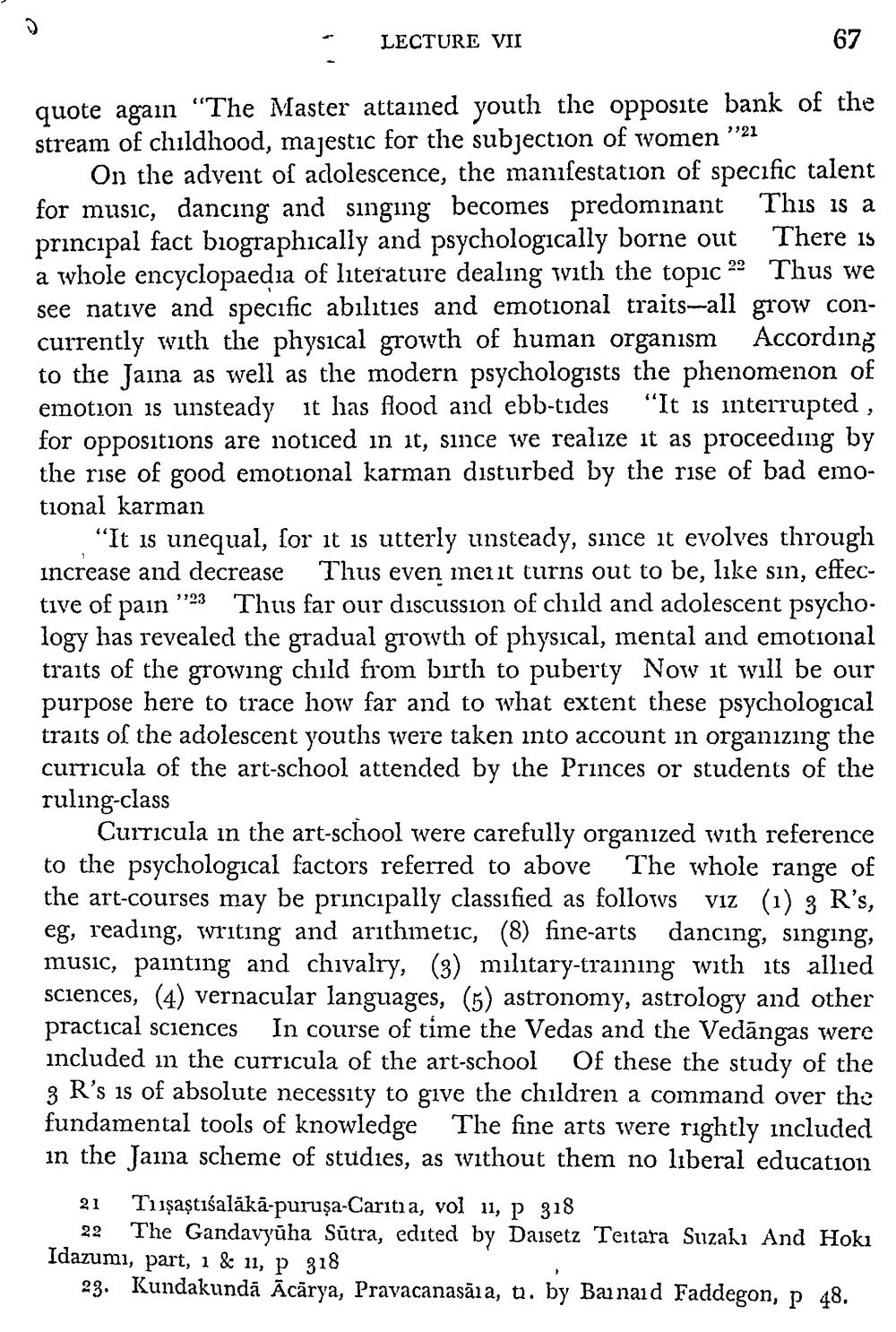________________
LECTURE VII
67
quote again “The Master attained youth the opposite bank of the stream of childhood, majestic for the subjection of women "21
On the advent of adolescence, the manifestation of specific talent for music, dancing and singing becomes predominant This is a principal fact biographically and psychologically borne out There is a whole encyclopaedia of literature dealing with the topic 29 Thus we see native and specific abilities and emotional traits-all grow concurrently with the physical growth of human organism According to the Jaina as well as the modern psychologists the phenomenon of emotion is unsteady it has flood and ebb-tides "It is interrupted , for oppositions are noticed in it, since we realize it as proceeding by the rise of good emotional karman disturbed by the rise of bad emotional karman
"It is unequal, for it is utterly unsteady, since it evolves through increase and decrease Thus even merit turns out to be, lıke sin, effective of pain "23 Thus far our discussion of child and adolescent psycho. logy has revealed the gradual growth of physical, mental and emotional traits of the growing child from birth to puberty Now it will be our purpose here to trace how far and to what extent these psychological traits of the adolescent youths were taken into account in organizing the curricula of the art-school attended by the Princes or students of the ruling-class
Curricula in the art-school were carefully organized with reference to the psychological factors referred to above The whole range of the art-courses may be principally classified as follows viz (1) 3 R's, eg, reading, writing and arithmetic, (8) fine-arts dancing, singing, music, painting and chivalry, (3) military-training with its allied sciences, (4) vernacular languages, (5) astronomy, astrology and other practical sciences in course of time the Vedas and the Vedāngas were included in the curricula of the art-school Of these the study of the 3 R's is of absolute necessity to give the children a command over the fundamental tools of knowledge The fine arts were rightly included in the Jaina scheme of studies, as without them no liberal education
21 Tuşaştıśalākā-puruşa-Caritia, vol 11, p 318
22 The Gandavyūha Sūtra, edited by Daisetz Teitara Suzahı And Hoki Idazumı, part, 1 & 11, p 318
23. Kundakundā Ācārya, Pravacanasāia, t). by Bai naid Faddegon, p 48.




